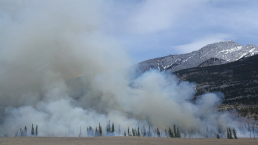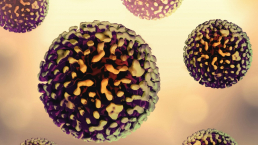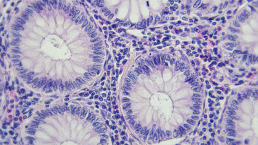
Smoky Soil: Improving Plants Resilience
Global warming has increased the prevalence of forest fires worldwide. This includes the U.S., the U.K., South America, Africa, and South East Asia. Forest fires also contribute to the impact of global warming. They cause an increased release of smoke, carbon dioxide and other pollutants into the atmosphere.
It can cause irreversible damage to ecosystems and biodiversity. Forest fires can result in deforestation which can lead to the destruction of crucial habitats and species.
Agriculture Impacted by Smoke
Another factor is agriculture. Agriculture can be affected by forest fires in various ways, for example, crops can be completely destroyed or even prolong the duration of the fire by providing fuel.
In addition, fire can kill crucial microorganisms in agricultural soil, partially sterilizing the soil. It can take time for the soil microorganisms to regenerate and create a favorable environment for crops to grow. This can put extreme stress on farmers as it can result in less crop yield and cause food shortages.
Research on Smoke and Plant Growth
Researchers have been investigating the effect that smoke has on soil and plant growth. For example, a group of researchers from the University of Missouri recently published a manuscript in the International Journal of Molecular Sciences. Their studies started by researching plant growth in soil contaminated with smoke and pollutants.
They investigated sunflowers’ behaviour by using liquid smoke, a food additive produced by condensing smoke. It’s used to give a smoky flavour to meat and vegetables. The researchers unexpectedly identified that adding liquid smoke to the soil of plants enhances their natural defence mechanisms. It increased the sunflower’s ability to resist diseases.
Using Molecular Imaging to Investigate Sunflowers’ Vascular System
The University of Missouri has the most powerful university reactor in the U.S. Nuclear reactors can be used to produce radioisotopes, which can be used in scientific research.
The current study used radioisotopes for cyclotron molecular imaging, to track the impact of smoke on sunflowers’ vascular system. This affects how they transport micronutrients, carbon, and water throughout the plant.
The vascular systems of sunflowers are very important for their defence mechanisms against potential threats. Dr. Richard Ferrieri, a Research Professor in the Department of Chemistry and Investigator at the University of Missouri Research Reactor (MURR), states that “Plants can’t run away when they are trying to defend themselves from an active threat.”
He added, “Therefore, it takes a lot of energy for a plant to dedicate precious resources it would normally dedicate to its growth to now defend itself. Much like the human body, a key to plant health lies in how well its vascular system can function under stress and move precious resources to the different growing parts.”
“Plants harness the energy of the sun, fix carbon dioxide, and make sugars that are transported throughout the plant using their vascular system,” Dr. Ferrieri concluded.
The researchers gave the sunflowers carbon dioxide. They then mapped where the sugars went, using radiographic imaging. This allowed them to evaluate how smoke affects the vascular and nutrient systems in the sunflower.
Results from Molecular Imaging
The researchers identified that, after exposure to smoke, the vascular and nutrient systems of the sunflower homogenously distributed the nutrients. It was suggested that bioactive components of smoke such as catechol and resorcinol, impacted the integrity of the plant cell wall. This allows the sunflowers to distribute their nutrients more evenly.
In addition, they observed physical differences in the sunflowers grown using liquid smoke, such as larger and thicker leaves with a 35% higher lignin content. Providing extra protection against pests and plant pathogens.
Future Studies
This was a promising discovery in the scope of plant sciences and agriculture, particularly given our changing climate. The authors hope to expand further on this study by investigating agricultural crops, such as soybeans.
Soybeans would be a great extension of the current research, as the vascular systems of soybeans are similar to those of sunflowers. In addition, this research may help to shed light on a possible smoke treatment for soybean crops. Which may help to prevent the spread of plant pathogens, such as leaf blight, to the next season’s crops.
Other Resources
If you’re interested in reading more about molecular imaging or other related research, check out the International Journal of Molecular Sciences.
In addition, the journal Plants has announced the release of a special issue for May 2023, which explores the topic of plants’ molecular mechanisms of defence.











That’s an interesting read. It would be good to know how other industrial crops like sugarcane respond to smoke
Hi Njabulo!,
Thank you for reading! we’re glad you enjoyed this article. We agree and look forward to further research in this area! We encourage you to keep up to date with Special Issues coming up in Plants in 2023 in particular ” Effects of Smoke on Plant Biology and Ecology” https://www.mdpi.com/journal/plants/special_issues/smoke_plants.